Unveiling Divine Intimacy with Father Thomas Keating. A High Vibe Book Review
EPISODE 155
 Join host Liz Gracia as she explores the transformative power of Centering Prayer in the book “Intimacy with God.” Father Thomas Keating’s “High Vibe” book calibrates above 200 on the Map of Consciousness, unraveling false perceptions of a punishing God.
Join host Liz Gracia as she explores the transformative power of Centering Prayer in the book “Intimacy with God.” Father Thomas Keating’s “High Vibe” book calibrates above 200 on the Map of Consciousness, unraveling false perceptions of a punishing God.
In this episode, Liz introduces Thomas Keating’s book “Intimacy with God: an Introduction to Centering Prayer” which delves into the origins, theology, and psychology of Centering Prayer, drawing wisdom from revered Catholic figures such as St. Teresa of Avila and St. John of the Cross.
It also introduces influential texts like The Cloud of Unknowing that uncover this contemplative practice’s depth and richness. Discover how Centering Prayer provides a pathway to divine intimacy, fostering a personal and intimate connection with the Divine.
Furthermore, this enlightening episode explores the harmonization of Christian and Buddhist philosophies within Centering Prayer, offering a profound intersection of spiritual traditions.
Liz discusses how harmful attitudes and beliefs about God can distort our relationship with the Divine and shares insights on overcoming barriers and resistance on our spiritual journeys.
With supportive practices like Lectio Divina and praying the rosary, listeners are equipped with practical tools to deepen their spiritual practice and nurture a transformative connection with the Divine.
Embark on a journey of spiritual growth, elevate your consciousness, and experience the profound teachings of Father Thomas Keating in “Intimacy with God.”
AFFILIATE DISCLAIMER:
This Mind Body Spirit Network site contains affiliate links to products, online events, and tools for personal & professional transformation from Sounds True. The Shift Network, MindValley, Evolving Wisdom, Positive Psychology, mindbodygreen, and other reputable and consciously aligned personal development, spiritual growth, and transformational companies. We set ourselves apart by vetting teachings and resources calibrated to be of higher consciousness, meaning upward-lifting, positively oriented, and constructive. We may receive a commission for purchases made through these links.
Description of Intimacy with God Book by Father Thomas Keating
Have you ever wondered what it means to connect with the divine truly? Father Thomas Keating’s ‘Intimacy with God’ takes us on a journey into the depths of spiritual communion, and its consciousness calibrations are a crucial aspect of this exploration. Let’s dive into the keys that unlock the doors to this profound intimacy.
From Amazon Description of the Book:
A poetic and accessible introduction to the method of Centering Prayer, this guide explains its origins, theological basis, and psychology by drawing on the writings of critical Catholic figures, such as St. Teresa of Avila and St. John of the Cross, and significant texts, such as The Cloud of Unknowing.
Describing the theological basis for the Centering Prayer while staying rooted in the heart of a very personal and intimate practice, the study explores how harmful attitudes and beliefs about God can distort a positive relationship with the divine.
With a careful balance of Christian and Buddhist philosophy, the volume also discusses the psychological barriers and levels of resistance that contemplatives must face and bolsters seekers with supportive practices like Lectio Divina (holy reading) and praying the rosary.
Updated to include a new foreword, this revised edition of a much-loved classic will inspire a deeply intimate experience with God.
Consciousness Calibrations of Intimacy with God Book
According to ConsciousnessCalibrations.com the “All Dimensions” calibration of the Intimacy with God book by Father Thomas Keating is 505 on the Map of Spiritual Progress by Founder Brian Gibbs.
This is a significant consciousness level in the spiritual dimension. It “holds” tremendous power and spiritual truths relative to most content in the world.
To put this into greater perspective only 4% of the population ever reaches the level of consciousness in the 500s.
This is the same “energy” as receiving love and the statement, “I believe God gives me the desires of my heart.”
- Spiritual Communion Explored: ‘Intimacy with God’ invites readers on a journey to connect deeply with the divine, offering insights into achieving spiritual communion.
- Consciousness Calibration Explained: The bookcalibrates at 505 on ConsciousnessCalibrations.com’s Map of Spiritual Progress, indicating its potential to elevate spiritual maturity and openness. The practice of centering prayer calibrates at 550 on Dr. David R. Hawkins’s Map of Consciousness®.
- Unlocking Profound Intimacy: Through worship, seeking God’s presence, and understanding His ways, Keating’s book serves as a guide to unlocking deeper spiritual intimacy.
- Transformation Beyond Tranquility: Far from being just about personal peace, ‘Intimacy with God’ encourages readers to undergo a spiritual transformation that empowers them to do great things.
- Centering Prayer as a Pathway: Keating outlines centering prayer involving a sacred word to symbolize intention, leading practitioners into a deeper communion with God. According to ConciousnessCalibrations.com, centering prayer is a powerful and significant practice calibrating at 550.
- A Compass for the Soul’s Journey: The book acts as a navigational tool for the soul, marking the challenges and aspirations on the path toward God.
- Experiential Learning Encouraged: Readers are learning about the journey intellectually and are invited to experience it personally through each chapter of the book.
- Testament to Centering Prayer: ‘Intimacy with God’ is evidence of the life-altering power of centering prayer and a guide for those seeking closeness with the divine.
- Foundational Knowledge for Further Exploration: As we delve deeper into the essence of centering prayer, the insights provided in ‘Intimacy with God’ form the foundation for understanding its transformative impact.
- Journey of Discovery Continues: With open hearts and ready minds; readers can continue their exploration of how centering prayer can profoundly deepen their relationship with God.
Explore all of the powerful spiritual teachings by Father Thomas Keating here.
Discover Centering Prayer as Path to Discovering the Presence of God
SoundsTrue.com Presents: Prayer as a Path to Deepen Your Relationship with God
Course objectives:
- Define the history and nature of Centering prayer with roots in the Contemplative Christian tradition through online video, audio, and written presentations.
- Practice the formal method of Centering Prayer utilizing online practice sessions, inspirational poetry, and music.
- Utilize, reflect upon, and answer online questions on the relevance of Centering Prayer as it relates to one’s own life.
- Discuss and outline the psychology of Centering Prayer, including the “seven moments” of Centering Prayer, along with the four levels of awareness.
Centering Prayer is a silent prayer practice that can move you toward a profound relationship with the Spirit of God within. It is a way of praying that opens the door to the Divine Indwelling—the ground of our being. With Centering Prayer, Father Thomas Keating and his colleagues Gail Fitzpatrick-Hopler and Father Carl Arico present the first online course in this method for deepening your intimacy with God and ultimately consenting to the presence and action of the Divine in all aspects of your life.
Introduction to Centering Prayer and ‘Intimacy with God’
Embarking upon a spiritual journey often leads one to seek methods of deepening their connection with the divine. One such method, centering prayer, is a contemplative practice that invites the presence of God into the stillness of one’s being. As we pivot from understanding the book ‘Intimacy with God to exploring the core principles it presents, we find ourselves at the threshold of this transformative form of prayer.
Centering Prayer as a Form of Contemplative Prayer
Centering prayer is a silent communion with God, where words fall away, and the soul speaks in the quiet breaths of stillness. Emerging from ancient Christian contemplative traditions, it was revitalized by Father Thomas Keating and his contemporaries in the latter half of the 20th century. This prayer form is not about asking for things or contemplating scripture; instead, it is about surrendering oneself to the experience of God’s presence (“Our Founders,” Centering Prayer).
Akin to Mindfulness Meditation, centering prayer involves settling the mind. Still, it uniquely emphasizes holding onto a sacred word to symbolize one’s intention to consent to God’s presence and action (Goodreads). It is a gentle invitation, extended without expectation or force, to rest in the grace of the divine.
The Concept of Intimacy with God and Its Significance
Why strive for intimacy with God? In many spiritual traditions, closeness with the divine is seen as the pinnacle of spiritual practice—a union not just sought for comfort but as an essential transformation of the self. ‘Intimacy with God’ explains that through centering prayer, individuals can deepen their relationship with God, making way for a process that molds them more into the likeness of Christ (Boston College, C21 Engage).
This intimacy is significant because it is not merely about knowledge of God but rather an experiential knowing that comes from God’s presence. It is a shift from understanding God as an external entity to experiencing God within, aligning with the movement from “self outside of God”, toward “God in the self” as outlined in the first chapter of ‘Intimacy with God’ (Goodreads).
As practitioners continue with centering prayer, they often report a journey that moves from initial rest to peace and then to a phase of inner purification, where deeper peace accompanies the unloading of subconscious turmoil—a process crucial for spiritual growth and transformation (Goodreads).
Implications for Spiritual Practice
 The implications of centering prayer extend far beyond the moments of silence. The practice gradually percolates into every aspect of one’s life, fostering a sense of serenity and tranquility. Through consistent practice, as ‘Intimacy with God’ suggests, one begins to view the world through a lens polished by the presence of God, affecting how one interacts with others and faces life’s challenges.
The implications of centering prayer extend far beyond the moments of silence. The practice gradually percolates into every aspect of one’s life, fostering a sense of serenity and tranquility. Through consistent practice, as ‘Intimacy with God’ suggests, one begins to view the world through a lens polished by the presence of God, affecting how one interacts with others and faces life’s challenges.
This prayerful orientation towards the divine is not a quick fix but a lifelong journey. It requires trust and dedication, and, as the author advises, one must trust the process and allow the unfolding in quiet solitude. The effects may only become discernible after persistent practice, yet the promise is a profound peace and a steady unburdening of the psyche.
In this introduction to centering prayer and the concept of intimacy with God, we have uncovered the contours of a practice steeped in rich tradition and poised to offer a transformative experience. As we explore its essence and impact in subsequent sections, we understand that centering prayer is not just a method but a gateway to a deeper union with the divine.
Unveiling the Essence of Centering Prayer
At the heart of centering prayer lies a profound simplicity: it is an act of consent to the presence and activity of God within. This simple yet transformative practice is not about asking for things, engaging in elaborate rituals, or using many words. Instead, centering prayer is about surrendering to the divine will and allowing God’s presence to permeate our being.
Consent to the Divine Presence
What does it mean to give consent to God’s presence? This act of consent is both a recognition and an invitation. It is recognizing that God is always with us, actively participating in the intricacies of our lives and inviting that presence to lead us deeper into spiritual intimacy. Centering prayer begins with choosing a sacred word to symbolize one’s intention to consent to God’s presence and action within (McGrath Notre Dame Blog) .
Deeper Union with the Divine
As we engage in centering prayer, we are not just consenting to God’s presence but also opening ourselves to transformation. This practice guides us towards a deeper union with God, aligning our hearts, minds, and souls with the divine will. By repeatedly returning to our sacred word, we gently let go of personal thoughts and emotions, creating space for God to work within us. This act of interior surrender allows us to become more like Christ, embodying love, compassion, and humility in our daily lives.
Expanding Awareness of Intimacy with God
Centering prayer extends beyond the moments of stillness and into every aspect of our lives. It expands our awareness of God’s intimate presence in all we do. As we practice this form of contemplative prayer, we notice the divine in the mundane and the sacred in the ordinary. This growing awareness can lead to a more grateful, peaceful, and fulfilling life deeply rooted in a sense of connectedness with God.
The Transformative Power of Centering Prayer
What happens when the ancient practice of centering prayer becomes a regular part of one’s spiritual life? To delve into the transformative effects of centering prayer on an individual’s spiritual journey, it is essential to recognize that this practice is not just another form of meditation but a deep engagement with the divine.
Delving into the Transformative Effects on One’s Spiritual Journey
For many, the journey of spirituality is an ever-evolving path. Centering prayer acts as a catalyst in this evolution, drawing individuals closer to the essence and presence of God. As Father Thomas Keating suggests, this form of prayer is not just about seeking answers or making requests; it is about developing an intimate and profound relationship with God. This relationship leads to transformation as individuals begin to reflect the peace, love, and compassion that are attributes of the divine. The process is subtle but powerful, changing perceptions, behaviors, and, ultimately, the heart. It’s a path to becoming more Christ-like, not through effort but through surrender and openness to God’s will.
Examining Personal Experiences and Testimonies
Testimonies from those who regularly engage in centering prayer often indicate an increased sense of inner peace and a decreased reactive behavior. As practitioners deepen their practice, they frequently report experiencing a greater understanding of unity with all things and an expansive love that transcends boundaries. Anecdotal evidence suggests that personal challenges and struggles are met with a newfound resilience and perspective. These stories are not just emotional responses; they indicate a realignment of the soul with its divine purpose, manifesting in everyday life.
Highlighting the Role in Fostering Inner Peace, Spiritual Growth, and Connection with God
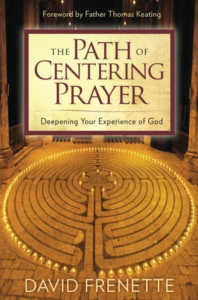 Inner peace is often used to describe being at ease in one’s mind and heart. Through the silence and stillness of centering prayer, individuals can experience a quieting of the constant internal chatter. This paves the way for spiritual growth, which, in this context, can be understood as expanding one’s capacity to love, understand, and connect with the divine. By consistently returning to the sacred word, as outlined in the guidelines for centering prayer (McGrath Institute for Church Life), practitioners find themselves increasingly rooted in the presence of God. This connection fuels the transformation, allowing people to move through life with a grace that reflects their inner serenity and alignment with God’s will.
Inner peace is often used to describe being at ease in one’s mind and heart. Through the silence and stillness of centering prayer, individuals can experience a quieting of the constant internal chatter. This paves the way for spiritual growth, which, in this context, can be understood as expanding one’s capacity to love, understand, and connect with the divine. By consistently returning to the sacred word, as outlined in the guidelines for centering prayer (McGrath Institute for Church Life), practitioners find themselves increasingly rooted in the presence of God. This connection fuels the transformation, allowing people to move through life with a grace that reflects their inner serenity and alignment with God’s will.
Centering prayer offers a sanctuary for the spirit in a chaotic and stressful world. It’s a transformative practice that doesn’t just change how we pray but how we live. By creating a receptive space for God’s influence, centering prayer practitioners are often surprised by the profound changes that occur both within and without.
Embracing Intimacy with God Through Contemplative Prayer
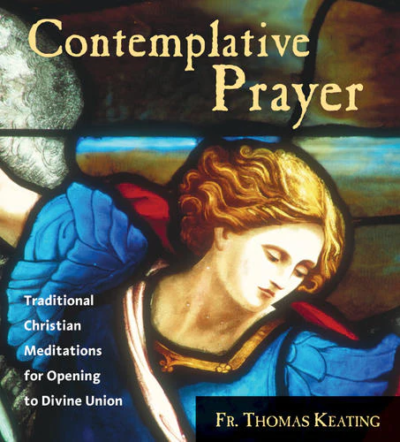 What does it mean to embrace intimacy with God truly? For many, the pathway to such closeness has been illuminated through contemplative prayer. This ancient tradition, which has found new expression in the teachings of Father Thomas Keating, is a gentle yet profound method for fostering a deeply personal connection with the divine.
What does it mean to embrace intimacy with God truly? For many, the pathway to such closeness has been illuminated through contemplative prayer. This ancient tradition, which has found new expression in the teachings of Father Thomas Keating, is a gentle yet profound method for fostering a deeply personal connection with the divine.
Exploring the Practice of Contemplative Prayer
Contemplative prayer is an invitation to silent communion with God. Unlike other forms of prayer that involve spoken words or requests, this method centers on stillness and the quieting of the mind. Rooted in the wisdom of the Desert Fathers and revitalized by Father Keating’s ministry, contemplative prayer echoes the biblical counsel to “go to your inner room, close the door and pray to your Father in secret” (Matthew 6:6). The goal is not to achieve a void but to fill it with an awareness of God’s presence.
Understanding the Significance of Sacred Words
In contemplative prayer, the repetition of sacred words or sentences aids in focusing the mind on God’s presence. These words, often called “sacred words,” act as anchors, drawing the practitioner back from distractions and into the heart of prayer. In centering prayer, the four R’s—resist no thought, retain no thought, react to no thought, and return ever so gently to the sacred word—are taught as a way to cultivate this practice (John Hamlett). Returning to these holy words, one’s attention is continuously redirected toward God, creating an environment where intimacy can flourish.
 As we delve into contemplative prayer, it becomes clear that it is more than just a technique; it is a journey toward unity with God. By focusing on sacred words, we open ourselves to the Indwelling Trinity, responding to the Holy Spirit’s call to consent to the Divine presence and action within. This core principle reflects our inherent goodness and the image of God within us (COGV).
As we delve into contemplative prayer, it becomes clear that it is more than just a technique; it is a journey toward unity with God. By focusing on sacred words, we open ourselves to the Indwelling Trinity, responding to the Holy Spirit’s call to consent to the Divine presence and action within. This core principle reflects our inherent goodness and the image of God within us (COGV).
Through contemplative prayer, we learn that intimacy with God is not a static achievement but an expanding awareness. As we grow in this intimate relationship, the fruits of our prayer begin to permeate our daily lives. Centering prayer thus becomes a transformative power, making us conduits of God’s love and compassion in the world around us, as previously discussed in the transformative power of centering prayer.
To conclude, embracing intimacy with God through contemplative prayer is an accessible path to spiritual depth. By dedicating time to be alone with the one who loves us, as St. Teresa of Ávila beautifully puts it, we open ourselves to the mystery and majesty of the divine. Whether new to spiritual practices or well-versed in them, the simplicity and depth of contemplative prayer make it a pivotal element in the quest for a closer relationship with God.
As we look ahead to the next section, we will meet the esteemed spiritual teacher, Father Thomas Keating, whose life and work have been instrumental in developing centering prayer. His biography is a chronicle of his achievements and a testament to the power of contemplative prayer in transforming lives.
The Contemplative Journey Volume 1 is Father Thomas Keating’s great masterwork: a complete curriculum devoted to a Christian path for achieving the still point of resting in God.
Learn More About:
- The complete history, theory, and daily practice of Centering Prayer
- What the medieval saints knew about resting in God
- The sacred word that revitalizes your prayers
- How to heal the irrational drives that can sabotage your spiritual growth
The Contemplative Journey Volume 2 is Father Thomas Keating’s great masterwork: a complete curriculum devoted to a Christian path for achieving the still point of resting in God.
Learn More About:
- The four elements essential to your spiritual health
- Three on-the-spot questions to diagnose core troubles
- How to overcome deeply ingrained habits with prayer
- Mastering the three essential human relationships
- The true purpose of marriage
- How to use Centering Prayer as a spiritual antibiotic
Meet Esteemed Spiritual Teacher Father Thomas Keating
 As we delve deeper into understanding the transformative power of centering prayer, we must acquaint ourselves with the life of a man who dedicated his existence to fostering a connection between humankind and the divine. This man is Father Thomas Keating, whose biography we unfold in this part of our exploration.
As we delve deeper into understanding the transformative power of centering prayer, we must acquaint ourselves with the life of a man who dedicated his existence to fostering a connection between humankind and the divine. This man is Father Thomas Keating, whose biography we unfold in this part of our exploration.
Biography of Father Thomas Keating
Thomas Keating’s journey began on March 7, 1923, and culminated with an impactful life that spanned 95 years until his passing on October 25, 2018. A Trappist monk and priest, Keating is widely recognized for his profound contributions to spiritual teachings and practices. Originating from the Cistercian Order within the Benedictine tradition, he served in monasteries across Colorado and Massachusetts, imprinting his wisdom and compassion upon countless individuals seeking spiritual guidance.
 Keating’s education and early life were marked by privilege and opportunity, which included attending Yale University. However, the call to monastic life captured his heart, leading him to join the Trappist order at St. Joseph’s Abbey in Spencer, Massachusetts. His deep commitment to the contemplative life paved the way for immense contributions to the Christian contemplative tradition and interfaith dialogue, which included founding the Snowmass Interreligious Conference, a platform for spiritual exchange among leaders of various faiths.
Keating’s education and early life were marked by privilege and opportunity, which included attending Yale University. However, the call to monastic life captured his heart, leading him to join the Trappist order at St. Joseph’s Abbey in Spencer, Massachusetts. His deep commitment to the contemplative life paved the way for immense contributions to the Christian contemplative tradition and interfaith dialogue, which included founding the Snowmass Interreligious Conference, a platform for spiritual exchange among leaders of various faiths.
Father Keating’s Role in Developing Centering Prayer
The profound impact of Father Keating’s role in developing centering prayer cannot be overstated. It was at St. Joseph’s Abbey where the seeds of the centering prayer movement were sown. Through his extensive work, Keating helped to revive the Christian contemplative tradition, drawing on ancient mystical teachings and adapting them to the modern context. As Keating described, the essence of centering prayer is giving consent to God’s presence and activity in our lives. This method of worship encourages practitioners to let go of their desires and embrace an intimate relationship with God.
 His book “Open Mind, Open Heart” is often considered a cornerstone for those practicing centering prayer. In it, and throughout his other works, Keating guides entering more profound levels of spiritual communion. His approach was deeply rooted in the belief that through surrender and opening oneself up to God, a person can experience deep transformation. Moreover, with its open invitation to embrace all aspects of life, Keating’s Welcoming Prayer has become a staple in contemporary spiritual practice, helping countless people find peace and equanimity in the face of life’s challenges.
His book “Open Mind, Open Heart” is often considered a cornerstone for those practicing centering prayer. In it, and throughout his other works, Keating guides entering more profound levels of spiritual communion. His approach was deeply rooted in the belief that through surrender and opening oneself up to God, a person can experience deep transformation. Moreover, with its open invitation to embrace all aspects of life, Keating’s Welcoming Prayer has become a staple in contemporary spiritual practice, helping countless people find peace and equanimity in the face of life’s challenges.
In recognition of his spiritual leadership, Keating co-founded Contemplative Outreach, an organization aimed at teaching the methods of centering prayer and supporting those on the contemplative journey. Through his lectures, writings, and establishing this network, Keating’s influence has touched a global audience, underscoring his role as a spiritual father for many in pursuing divine intimacy.
Father Thomas Keating’s legacy is marked by a deep yearning to bridge the gap between the mortal and the sacred. Through his life’s work, he fostered a space for individual spiritual growth and contributed to the collective understanding of contemplative practices across different faith traditions. His teachings continue to illuminate the path for those seeking to deepen their relationship with God through centering prayer.
Conclusion
In the stillness of our lives, where silence and solitude give us room to ponder, we often seek a connection more profound than the physical—a spiritual intimacy that transcends the mundane. In these moments of reflection, we may consider embarking on a journey with centering prayer as our guide. But why should one explore this path? What does it mean to deepen intimacy with God through such a practice?
Centering prayer is not merely a technique; it’s an opening of the heart, an invitation to divine presence. As we have discovered throughout this exploration of ‘Intimacy with God’ by Father Thomas Keating, centering prayer becomes a transformative vessel, allowing us to wear away at the false self and embrace the true essence within us, reflecting Christ’s love and compassion. Returning repeatedly to a sacred word is a gentle reminder of who we are meant to be in God’s eyes—liberated, whole, and intimately connected to the divine.
As we’ve learned, engaging with transformational prayer allows us to enter a dialogue with God, fostering a relationship that transcends speaking at Him to truly listening and being changed by His Word (Wycliffe). The effects of such practices are not just spiritually anecdotal but empirically supported, with studies showing significant decreases in anxiety and increases in spiritual well-being among practitioners (Springer).
The Biblical result of contemplative prayer further enlightens us about the spiritual potency of this discipline.
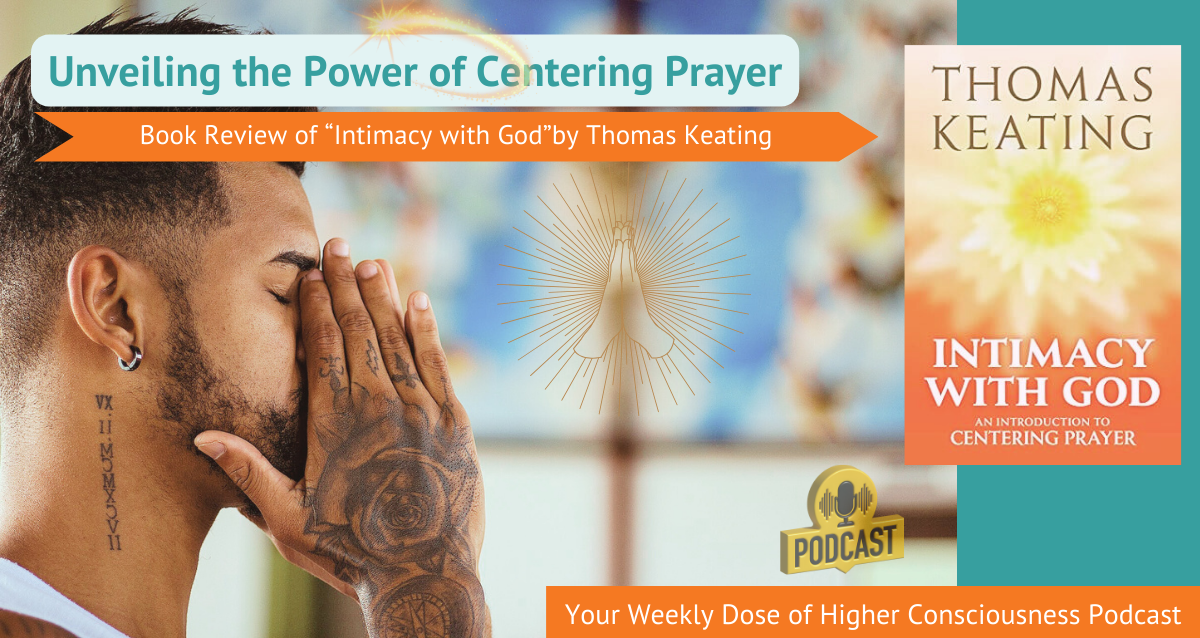




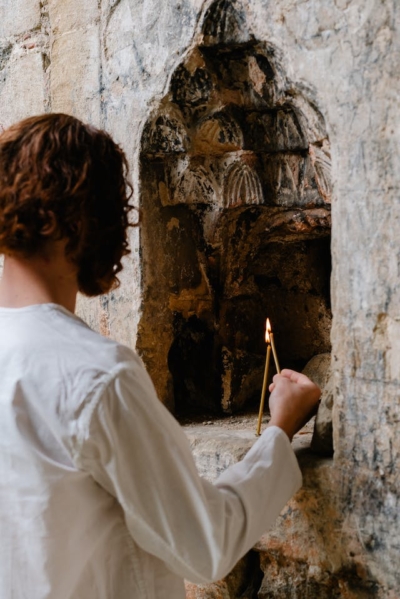
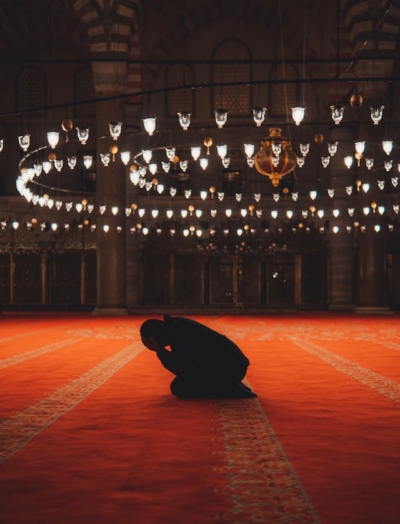
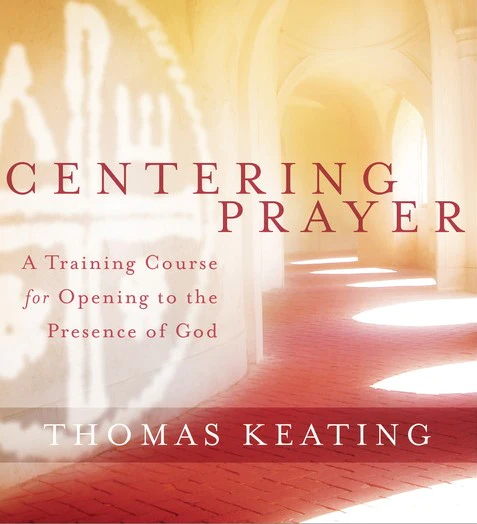

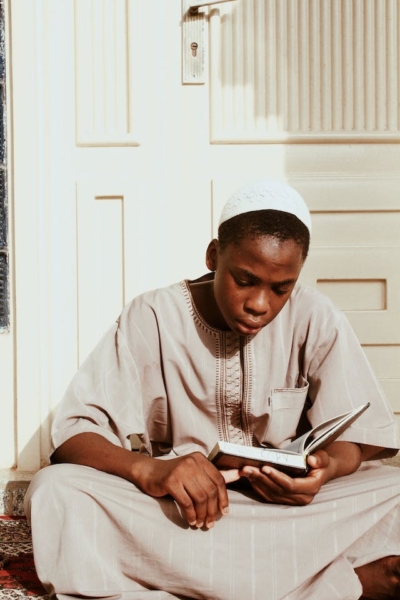

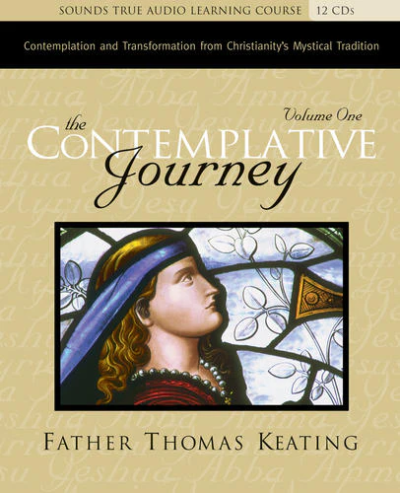
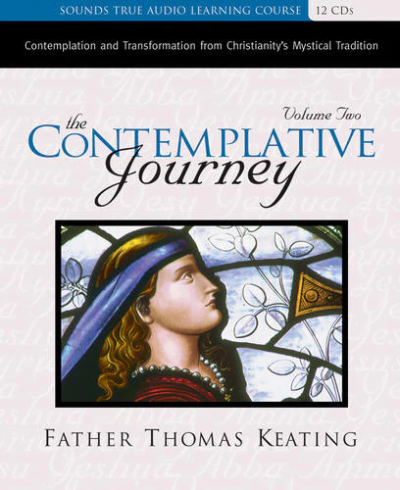

Leave a Reply